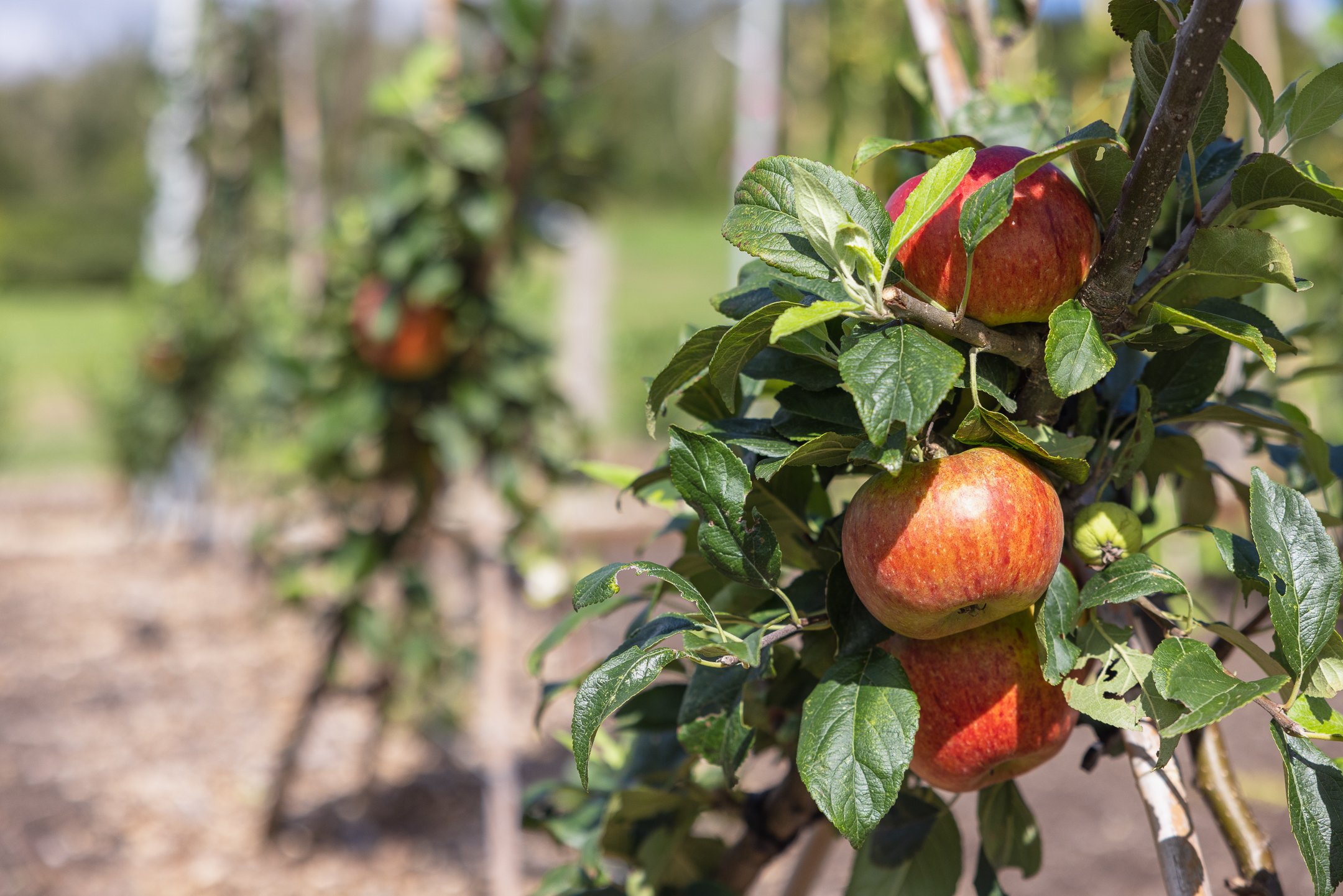
The Orchards
When we were drawing up the first plans for Gillyflower, we had a dream to grow the largest collection of rare and unusual fruit trees anywhere in England - a dream we still carry to this day!
Diversity is the key ingredient in the orchards at Gillyflower Farm; from the huge variety of fruit and nut trees in production to the biodiversity supported by our sensitive approach to habitat management, we know that diversity provides solutions to the 21st century challenges growers face today. Our traditionally planted orchards contain thousands of Cornish, heritage, and continental fruits, many of which have fallen foul of traditional agricultural practises and now stand on the brink of extinction – we believe they have a place both in our landscape and on our kitchen tables. Beyond varietal conservation, preserving our landscape and building resilience into our ecosystem is crucial if we are to show that food production and conservation work best in harmony with one another.
From 14 different varities of apple, including perhaps the finest eating apple of all, the Gillyflower, to cherries, gages, mulberries and more - we’re growing a lot in our orchards.
History of the orchard
The idea for the orchards was conceived in 2017, at a breakfast with Sir Tim Smit and Philip MacMillan Browse, a renowned horticulturalist who, along with Tim, helped deliver The Lost Gardens of Heligan and The Eden Project. Together, they devised a plan to bring large-scale commercial orcharding back to the Fowey Valley, and with it the potential for a huge variety of produce to make its way back once again into local markets and onto local dinner tables. The idea was simple, curate a robust and diverse selection of fruit trees and crop them extensively to create a traditional orchard comparable to those in existence before the world wars. In this way, a legacy project set to benefit local people, fauna, and flora for generations to come, was born.
Not your average orchard
The process by which we produce our trees takes around 2 years. We first send budwood taken from our selected varieties to a specialist nursery, who then grafts them onto suitable rootstocks to be grown on and returned to us the following year as 1 year maiden whips. The process is full of pitfalls and is by no means an exacting science, but this simply adds to the romance of it all!
Trees for the future
Traditional orchards, disappearing from our landscape at an alarming rate (90% reduction since the 1950’s), are a hotspot for biodiversity in our countryside. The areas of scrub and the boundaries provide shelter and transportation routes across the landscape, the undisturbed grassland and fruit trees support pollinators in the spring and the abundance of dead and decaying woody material a feast for the saproxylic organisms (deadwood specialists); they all combine to produce a patchwork of habitats that support a healthy ecosystem. The existence of the orchard is undoubtedly a win for wildlife, but it is in the way that we husband the wider landscape that the real wins become apparent. Boundaries left to grow wild with brier and brambles, swards allowed to recover, regenerate, and lock carbon into the soil between cuts, areas of scrub and gorse cornered off and protected to provide shelter and cover for some of our more timid countryside creatures; all to ensure that we are balanced in our production endeavours, a nod to the inescapable fact that life is interdependent.




